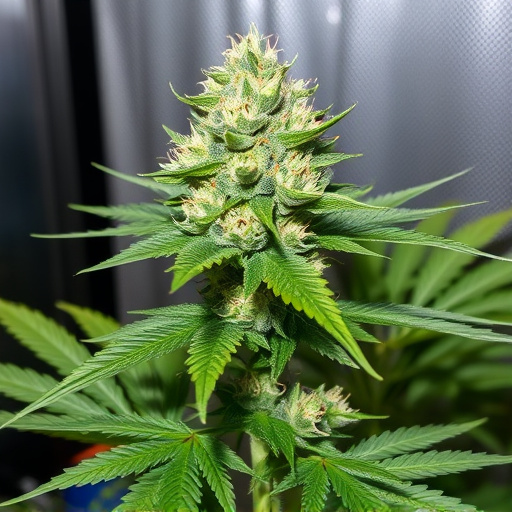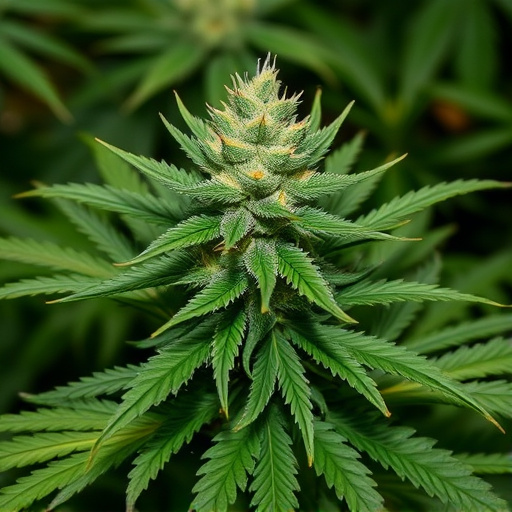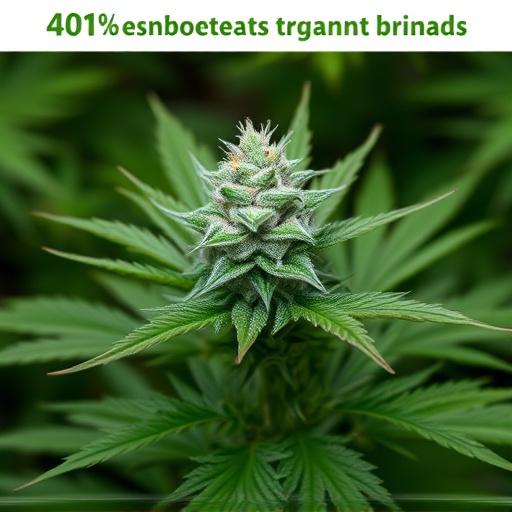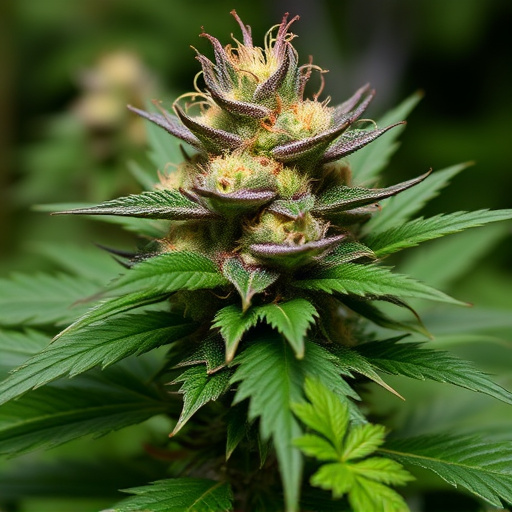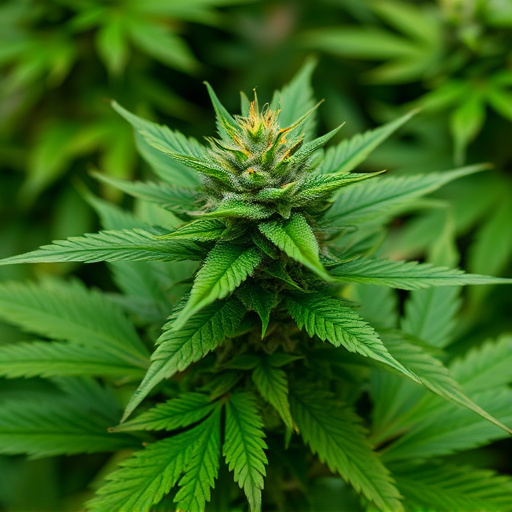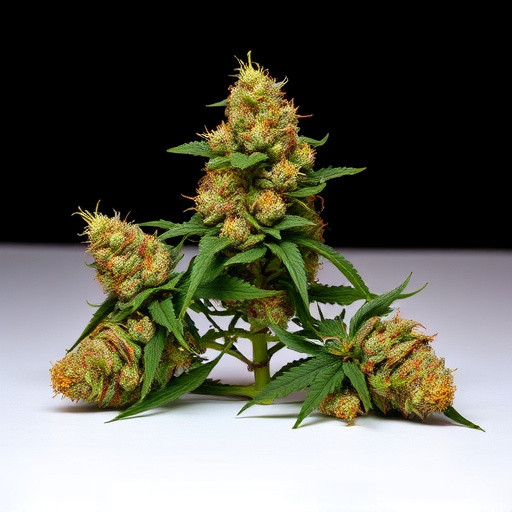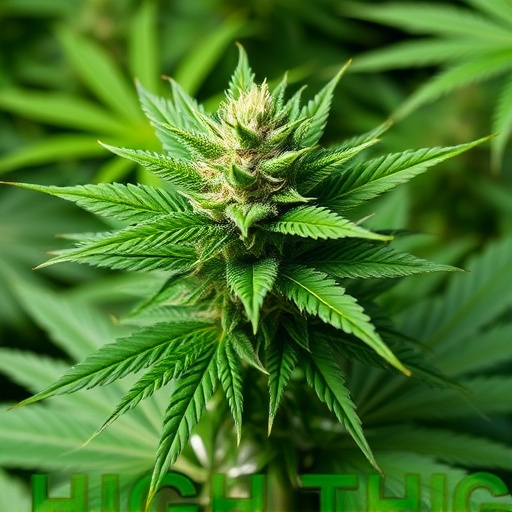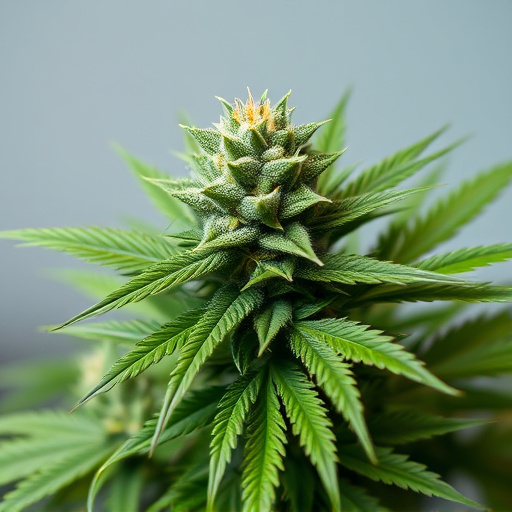High THC sativa strains significantly impact appetite regulation by directly interacting with the brain's endocannabinoid system. These strains, renowned for their therapeutic potency, stimulate hunger through enhanced neurotransmitter release and disrupted brain regions controlling hunger and satiety. This effect is particularly beneficial for patients struggling with conditions like anorexia or cachexia, leading to increased hunger pangs commonly known as "the munchies." Scientific research and anecdotal evidence both support the correlation between cannabis consumption, especially high THC sativa strains, and heightened appetites.
Cannabis has long been associated with increased appetite, a phenomenon often attributed to its active compound, THC. This article delves into the science behind why high THC sativa strains can trigger hunger pangs. We explore the impact of THC on the brain’s appetite-regulating chemicals and investigate how specific sativa strains, known for their potent THC content, contribute to this effect. Scientific research and anecdotal evidence both point to these strains’ ability to stimulate the senses and curb eating inhibitions.
- Understanding the Impact of THC on Appetite
- The Role of Sativa Strains in Inducing Hunger
- Exploring Scientific Research and Anecdotal Evidence
Understanding the Impact of THC on Appetite
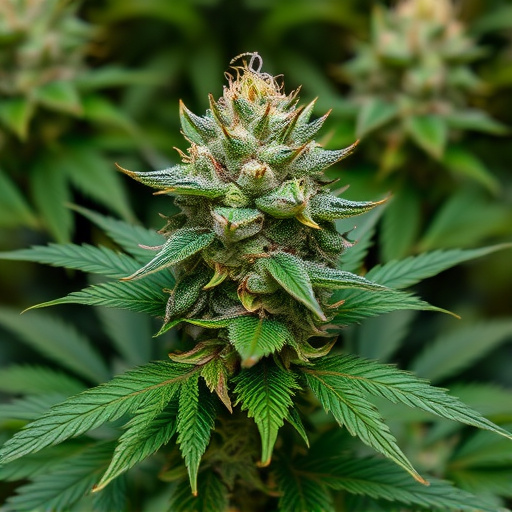
The impact of THC, the primary psychoactive compound in cannabis, on appetite is a well-documented phenomenon. Research suggests that THC directly interacts with our brain’s endocannabinoid system, which plays a significant role in regulating appetite and metabolism. When consumed, THC binds to cannabinoid receptors, leading to increased hunger and cravings. This effect is particularly pronounced with high THC sativa strains, known for their potent therapeutic properties but also their ability to stimulate the appetite.
The reasons behind this stimulation are multifaceted. THC can enhance the release of neurotransmitters like dopamine, which not only contributes to feelings of pleasure but also triggers physiological responses related to eating. Additionally, it may disrupt the normal functioning of areas in the brain that control hunger and satiety, leading to increased food intake. This is why many patients with conditions like anorexia or cachexia often report enhanced appetite after using cannabis with high THC content.
The Role of Sativa Strains in Inducing Hunger
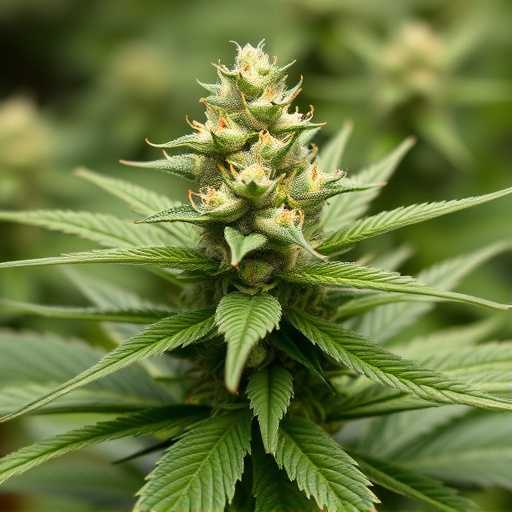
High THC sativa strains are renowned for their potent effects, which can include an increased appetite or what’s often referred to as “the munchies.” This is largely due to the interaction between cannabis and the endocannabinoid system (ECS), a network of receptors in our bodies that regulate various functions, including hunger. Sativa varieties typically have higher levels of tetrahydrocannabinol (THC), the compound responsible for most of cannabis’ psychological effects. When consumed, THC binds to ECS receptors, particularly those in the brain and nervous system, influencing appetite regulation.
These high-THC sativas can stimulate certain neurons in the hypothalamus, a part of the brain that controls hunger and satiety. This stimulation can lead to increased hunger pangs and cravings for carbohydrates, a common experience often described as a “food coma.” The effect is so pronounced with some strains that users may feel compelled to eat, even at unusual times, leading many to indulge in snack-heavy meals post-consumption.
Exploring Scientific Research and Anecdotal Evidence
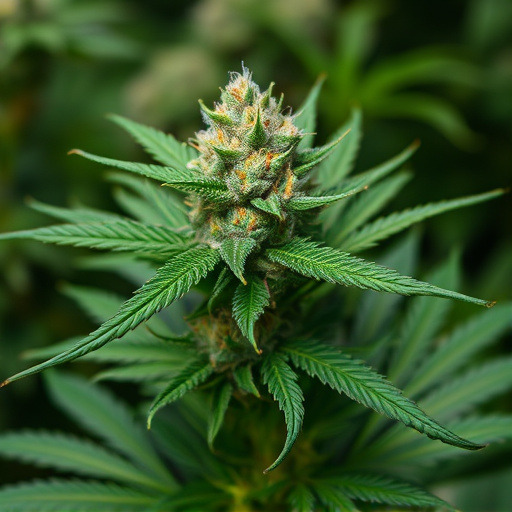
Scientific research has explored the connection between cannabis consumption and increased appetite, often attributed to the active compounds found in the plant, particularly tetrahydrocannabinol (THC) and cannabidiol (CBD). Numerous studies have shown that THC, prevalent in high THC sativa strains, directly influences the brain’s endocannabinoid system, which plays a significant role in regulating hunger and satiety. This interaction can lead to increased hunger and cravings, often described as the “munchies.”
While scientific evidence provides a biological explanation, there is also substantial anecdotal evidence from cannabis users supporting this phenomenon. Many individuals report feeling hungrier after consuming cannabis, especially high THC sativa strains known for their potent effects. This experience has been documented in various forms, from personal blogs and online forums to scientific surveys, all suggesting a strong correlation between cannabis use and heightened appetite.
Cannabis’ effect on increasing hunger, particularly through high THC sativa strains, is a complex interplay of chemical reactions within the body. Scientific research and anecdotal evidence alike point to THC’s ability to stimulate appetite, with specific sativa strains known for intensifying this effect. Understanding these mechanisms not only satisfies curiosity but also has practical implications for medical cannabis use, offering potential relief for conditions where appetite stimulation is beneficial.
